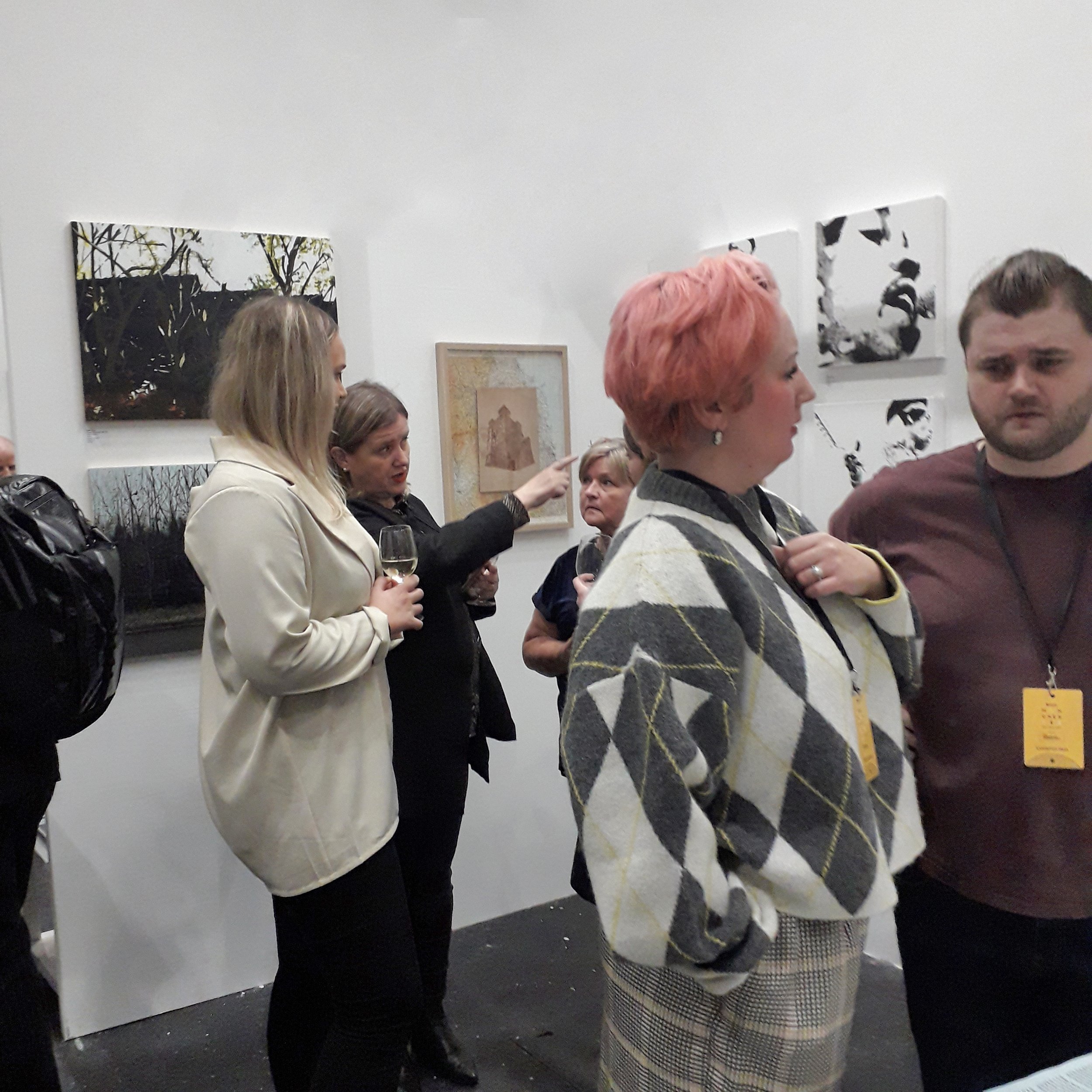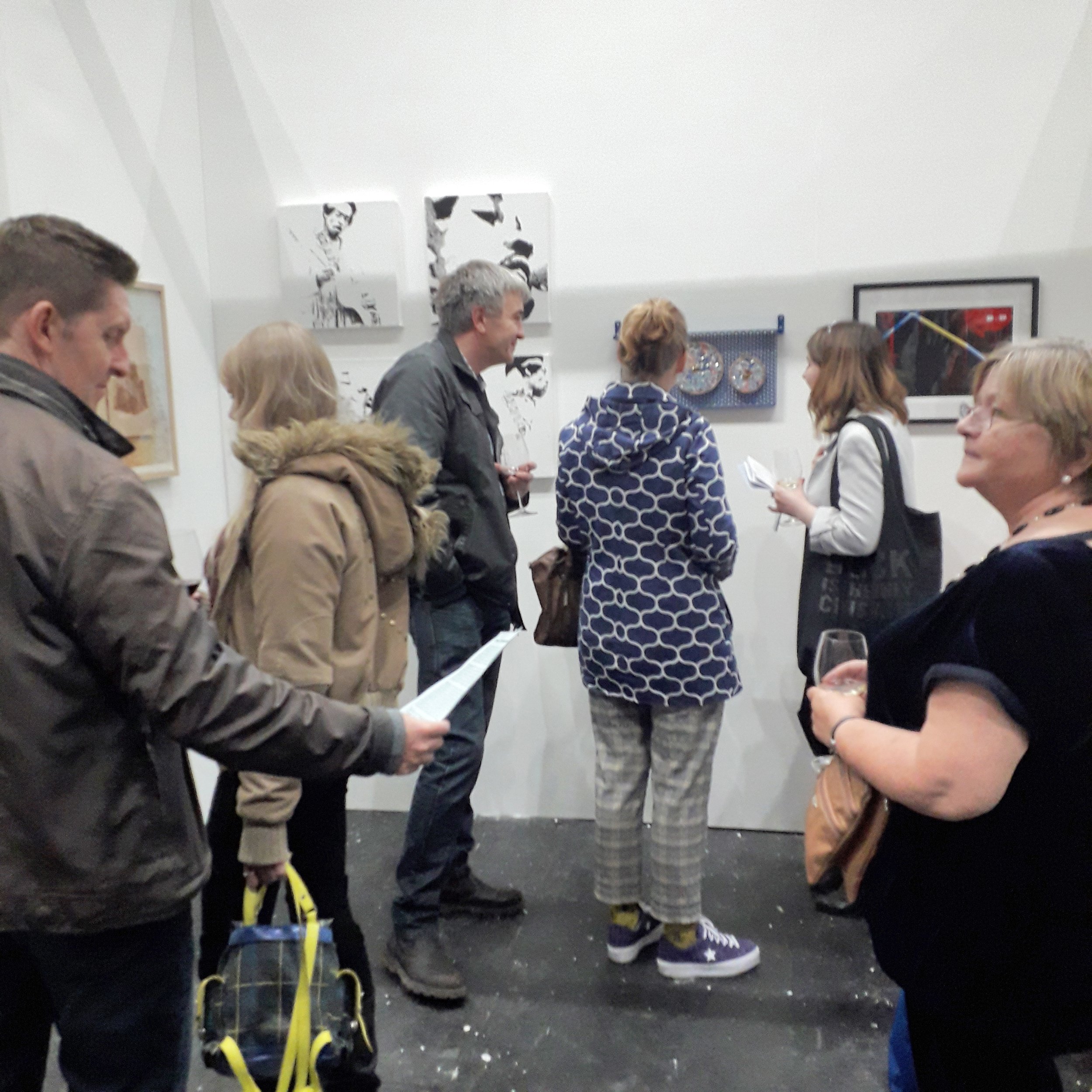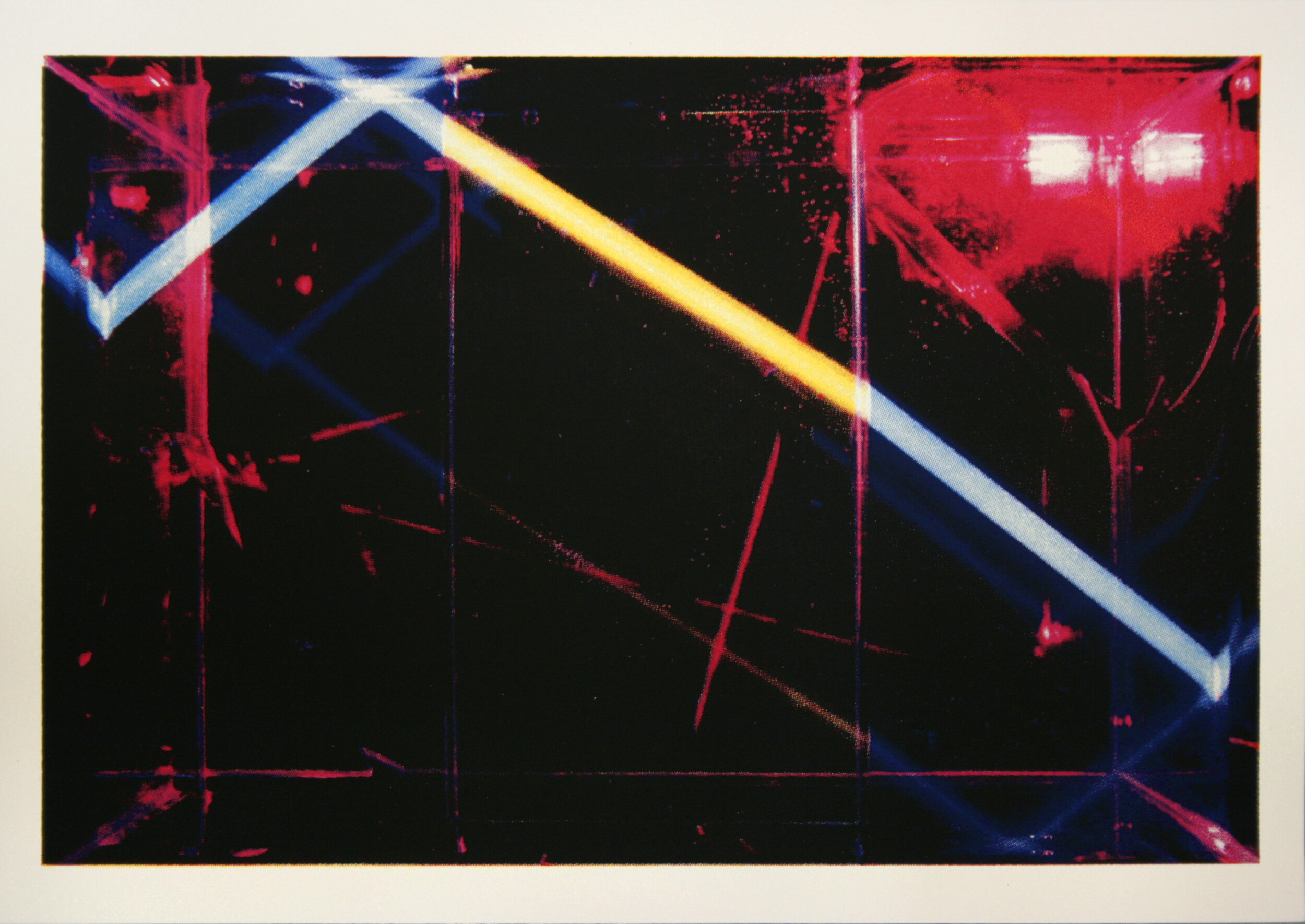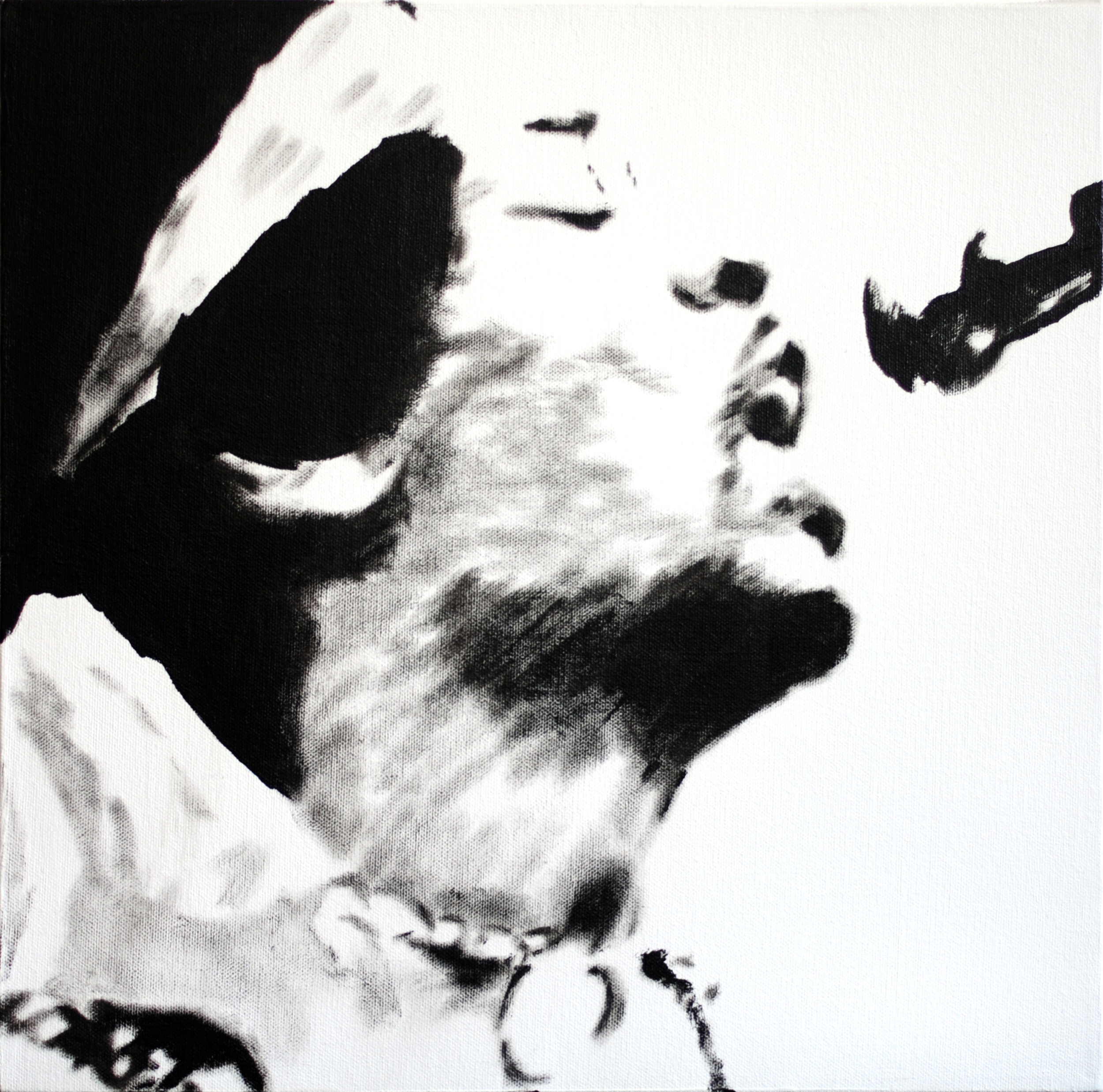The Manchester Contemporary, Manchester
11-13 October 2019
Vane is pleased to be participating in The Manchester Contemporary. You can find us at stand 138.
Vane’s presentation for The Manchester Contemporary this year includes both artists from the gallery’s recent exhibition programme and from neighbouring initiatives, Ampersand Inventions and B&D Studios, both based in the Orbis building, Commercial Union House, home to the largest concentration of artists and creative organisations in Newcastle upon Tyne. Artists showing are Ben Applegarth, Feliks Culpa, Kirsty Harris, Jonpaul Kirvan, Melanie Kyles, Carole McCourt, and Narbi Price.
Ben Applegarth is concerned with a fascination with mathematical patterns and the literal and figurative role of perspective. His four-colour screenprint, Dichroism (2019), is based on a photograph of several laser pens shining through a water tank filled with glass prisms. Bellow (2019) is a sculpture inspired by the progressive rock band Tool, the sprawling patterns, polyrhythms and mathematical timings of the band’s lyrics echoed in its plexiglass, thread and wood construction.
Feliks Culpa works at the fault line of figuration and appropriation creating monochrome images dictated by time. Culpa questions at what point memory and memorial become mere memorabilia and whether death has a sell by date. If 6 was 9 (2019) consists of four paintings of Jimi Hendrix representing 1/6th of a second of celluloid time lived through his performance at Woodstock in 1969. The series is an extension of Quintet for the End of Time, 24 paintings representing one second of time from the same performance, showing at the British Music Experience, Liverpool in 2020. Culpa is also showing in the 2019 ING Discerning Eye show at Mall Galleries in London in November.
Kirsty Harris explores the terror and the beauty of nuclear explosions. Her paintings of nuclear bomb tests are vast and confrontational, depicting moments of manufactured violence that radically disrupt the landscape. The Risographic print, Charlie (2019), is taken from Harris’s painting of the same name showing an American nuclear test carried out in 1951. The 12-inch vinyl picture disc, How I Learned to Stop Worrying (1945-2019) (2019), is a musical account of every officially recorded nuclear explosion between 1945 and 2019.
Jonpaul Kirvan has used a laser to engrave onto bird’s eye maple veneer the image of Newcastle Castle, which was built between 1172 and 1177. The original masons used a variety of traditional hand tools – mallets, chisels and metal straight edge – to shape the stone and leave their mark. In Fellowship (2019) Kirvan uses the laser beam like a pencil: controlling the direction, intensity, and speed of movement, vaporising and shaping the surface of the wood to leave his own trace.
Melanie Kyles explores themes of feminism and craft, taking what are usually regarded as gender-specific materials – fabrics and crystal – to subvert and blur the boundaries between art and fashion. Goldwork embroidery has traditionally been used on military and royal garments. In Golden Preserve (2019) goldwork signifies not wealth or power, but workmanship and collaboration. The worker bee represents these qualities, as well as being a recognised symbol of Manchester since the Industrial Revolution.
Carole McCourt is a mixed media artist with walking at the core of her practise. Her work is about repetition, landscape, captured moments and geological time. She obsessively collects found ‘treasures’ and the hidden stories they evoke culminating in prints, drawings, film and text-based pieces. These etchings are part of an installation, 3000 things I notice, where McCourt repeated the same walk four times a week for six months. They are multi-layered depictions of three of the treasures she noticed that capture the beauty of geological time.
Narbi Price journeys to places that have witnessed a range of events – variously historical, famous, or forgotten. Untitled Allotments Painting (North Seaton) and Untitled Trees Painting (Colliery) (2018) are part of a larger series showing the Northumberland town of Ashington 30 years after the last mine closed. Once the largest pit village in the world, Price shows the town searching for a new identity. Price was a prize winner in the John Moores Painting Prize, Walker Art Gallery, Liverpool (2012), winner of the 2017 Contemporary British Painting Prize and Visual Artist of the Year in The Journal Culture Awards 2018.
Manchester Central
Windmill Street
Manchester
M2 3GX
www.themanchestercontemporary.co.uk
Share this page
















